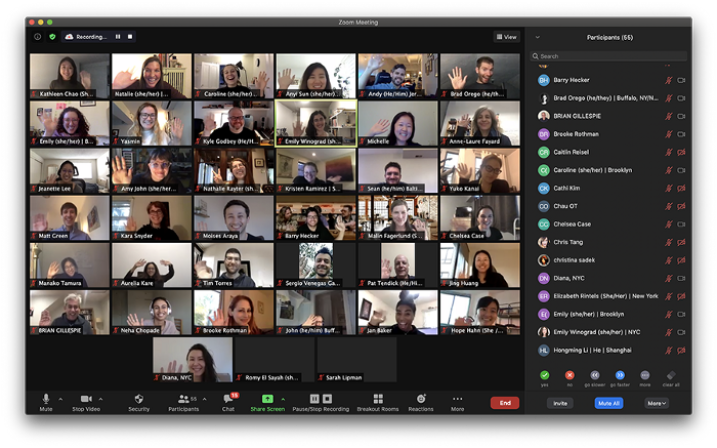Financial Industry & Regulation
Q: What are the unique challenges you face working in an industry like Finance? Specifically one that’s highly regulated and one that’s stereotypically very old/resistant to change || What kind of financial regulations are part of your process at Capital One? UX Research in particular || At what point in your process do you need to consider/apply financial regulations?
Natalie: When it comes to unique challenges I consider the biggest ones to be recruiting research subjects, talking directly to our own clients, and process around what we can share to get helpful feedback on. For the products and services we design for, a specific context is needed to gather useful feedback — some things we create are very specific and highly complex. We cannot simply ask an individual off the street, so if we want to speak to research subjects out of our own clients recruiting can often be a challenge. To combat recruiting research participants we leverage ample lead time and make sure we pad the recruitment process. When we want to speak to our own clients, we often face resistance from partners who are less familiar with research. To work around fears of us speaking directly to our clients we spend time explaining WHY speaking to them is important and what we hope to learn. Finally, we consider financial regulation throughout our process either when it comes to keeping information secure, leveraging NDAs during the concepting phase, or when it comes to designing for something that meets financial regulation ie. that a process has proper checks and documentation. I often work with individuals from our Risk and Legal teams when it comes to specifics.
Q: I’d love to hear about the in-house experience with financial “clients” and how you bring more traditional financial product folks along towards design thinking concepts.
Natalie: We work closely with our actual clients through research as well as our more traditional financial business partners (our product folks usually come from varying backgrounds but our business parters in roles like Sales, Operations and Servicing often come from banking backgrounds). When it comes to traditional financial business partners, I regularly explain reasoning behind research and design methods. It is as simple as that. I explain what I want to do in regard to collaboration with them or their clients — I just break down steps, reasoning behind each step in detail to help them build trust in me and the process. I educate and build trust along the way, that never stops and I embrace that it is a key component of my job function.
Q: I would love to know how agencies or consultants can collaborate with the financial institutes.
Natalie: I would say that they partner as they would any other sort of organization, but with more security checks. I have been on both sides at this point, and there are just more hoops a financial institution will make an agency jump through, more precautions. Agency partners often are asked to complete tests to show that they understand regulations we abide by and are sometimes asked to go through a background check before working with us. We may require the use of a secure laptop issued by us or require additional security to be implemented when doing any work for us. Outside of that, just explain WHY you are needing to do anything you would like to do collaboration wise ie. I need to speak directly with your clients to better understand how they work with you using a different lens than you may have used in the past / to pickup on details that will help inspire the design work to be most effective and meet their unique needs.









Share your thoughts
0 RepliesPlease login to comment